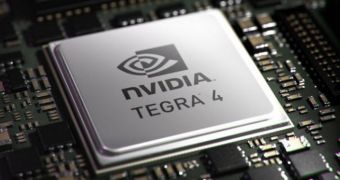The Tegra 3 mobile system-on-chip has managed to charm its way into the tablet designs of many consumer electronics device developers, but the same cannot be said about its successor.
NVIDIA did say the Tegra 4 was faster than the Apple A6X in the iPad, and better by a factor of 6 than Tegra 3.
Knowing that, one might be tempted to believe that tablet makers, and smartphone designers for that matter, would be gathering under its banner with all haste.
This is not happening, according to reports out of Taiwan, which Digitimes has picked up on.
Toshiba is, thus far, the only vendor that has confirmed use of the Tegra 4. Other companies, like Acer and ASUS, have other processor sources.
More precisely, the two have close ties with Qualcomm, so they are bound to choose Snapdragon SoCs over NVIDIA's Wayne.
If this state of affairs doesn't change, the Santa Clara, California-based GPU and SoC maker might have to reduce the prices of Tegra 3 to stay relevant in the mobile sector.
If nothing else, entry-level devices with ASUS Transformer Prime-level specifications will turn heads for certain, though MediaTek and other China-based chip makers might cause trouble with their own low-cost solutions.
On the flip side, most Tegra 4 slates won't be out and about until the middle of the year. As such, NVIDIA still has a few months to get contracts. Tegra 4 is no slouch after all.
For those that need a refresher course, Tegra 4 Wayne has four ARM cores (Cortex A15) and a GPU with 72 custom cores. 4G LTE broadband can be included as well, by adding the Icera i500 chipset to the mix.
The prospects for Tegra 4 smartphones are shrouded in even more uncertainty than the tablets, or less depending on one's view. Given the might of the platform, only “superphones” can be made with it.

 14 DAY TRIAL //
14 DAY TRIAL //